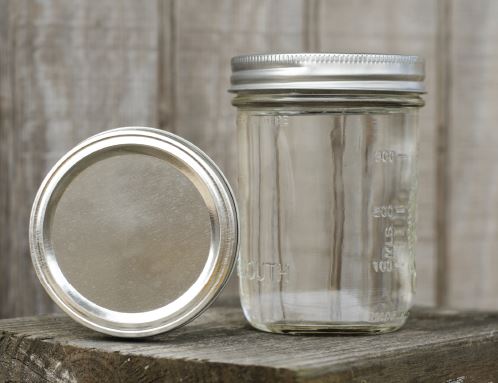
How much garbage do you generate? What about recycling or food waste? The Zero Waste movement is swiftly picking up momentum around the world, prompting people to rethink plastic, packaging, and consumerism as a whole.
The year I went Zero Waste
In 2019 I resolved to be more eco-friendly, but I didn’t quite know how. In my research, I stumbled across Zero Waste blogs and websites and was inspired.
Trying not to send anything to a landfill—as well as reducing reliance on recycling and composting—are key components of the movement, but it also means learning to refuse single-use plastic, questioning how much you buy in the first place, and questioning the linear economy (see sidebar).
Meet the “mother of the movement”
When Bea Johnson went Zero Waste more than 10 years ago, there were no blogs to give her tips. In fact, she’s referred to as the “mother of the Zero Waste movement” and effectively coined the term Zero Waste in this context. She taught herself through trial and error and found a system that worked for her.
Since then, she has created a blog to inspire others, written a best-selling book (Zero Waste Home, Scribner, 2013), became an international speaker, and consulted for many companies trying to reduce their waste. And yes, her family’s garbage for an entire year fits into a Mason jar.
Why Zero Waste?
There are almost too many reasons to count! Here are a few.
- Only 9 percent of plastic gets recycled. Much of what we think is recyclable is not, and many argue that plastic isn’t truly recycled—it’s “downcycled,” becoming weaker and of lesser quality each time.
- Since China—and many other countries—have stopped the import of our low-quality plastic, our recycling industry is in crisis. There’s too much product and not enough demand, and as a result, nowhere for our plastic recycling to go.
- Many (possibly even most) types of plastic are toxic to us and the environment.
- Plastic enters our waterways, poisoning the ocean, the animals, and us. By 2050, it’s estimated there will be more plastic than fish (by weight) in our oceans.
- This plastic is deadly to wildlife, who mistake it for food. Recently, for example, a young whale washed up on shore with 88 lbs (40 kg) of plastic in its stomach, dead from starvation and dehydration.
- Plastic pollution becomes more toxic over time, absorbing chemicals such as persistent organic pollutants.
If we drastically reduce the amount of waste produced in the first place, these problems are also drastically reduced. Going Zero Waste means taking power into our own hands.
The how-to
Zero Waste may sound daunting, but Johnson explains, “It works when it simplifies your life, not when it complicates it.” By opting out of rampant consumerism, living with less waste saves a considerable amount of money and time, and it lowers stress. The key is finding what works for you. Johnson uses baking soda as an example: it’s a Zero Waste, safe, cheap, and readily accessible product that can be used for a multitude of things, including deodorant, toothpaste, housecleaning, and recipes.
Johnson’s website, zerowastehome.com, offers a “bulk finder” so you can find nearby refill stores. Health food stores typically have wonderful bulk sections and also carry excellent Zero Waste-friendly goods.
The important thing to keep in mind is that you don’t need to be perfect. It’s okay to make mistakes, go slowly, and develop your own system based on what’s available to you and what you find easiest.
What’s the circular economy?
In a linear economy, raw resources are used to produce products and packaging that will ultimately be thrown “away.” In a recycling economy, some materials are reused. However, to ensure we don’t run out of resources, our economy should be circular, meaning that nothing (or as little as possible) ends up as non-recyclable waste.
This often goes together with extended producer responsibility, in which companies are held responsible for the product or packaging’s “end of life.” Examples include retailer take-back and recycling programs.
Follow the 5 Rs
Feeling inspired? These are Johnson’s five steps to Zero Waste. They should be followed in order, with recycling and rotting as a last resort.
- Refuse what you don’t need, as every item that we take or purchase sends the signal to companies to produce more of it. She suggests developing a phrase you feel comfortable using, such as “No thank you, I don’t need it.”
- Reduce your waste and possessions. The less you have, the less you have to store, care for, and clean.
- Reuse items rather than using disposables—try these simple swaps.
- Recycle and read up on the recycling rules in your municipality, as every city is different.
- Rot (a.k.a. composting) your food scraps and other biodegradable items.
Learn more
Bea Johnson’s website (zerowastehome.com) and book (Zero Waste Home), which she urges people to pass on to friends, therefore creating less waste!
Anne-Marie Bonneau, “Zero Waste Chef”: zerowastechef.com
Zero Waste Canada: zerowastecanada.ca
Story of Stuff: storyofstuff.org
Environmental Defence: environmentaldefence.ca/campaign/ending-plastic-pollution
Tiny but deadly
Microplastic refers to tiny plastic pieces. Sources include synthetic clothing (tiny plastic pieces come off in the wash), plastic microbeads in some personal care products, and glitter, as well as larger plastic pieces breaking down into small bits. They enter our waterways and work their way up the food chain to us: a new study shows we consume 5 g of plastic every week—that’s a credit card’s worth!
Going Zero Waste might just be the only New Year’s resolution I’ve managed to stick to, and that’s because I’m doing it in reverse: rather than starting perfectly and stopping when I slip up, I’m starting small and building new habits, one by one. The good thing is that you don’t have to wait for the new year to start. Will you join me?
Follow Leah Payne’s imperfect Zero Waste journey at leahstellapayne.com and instagram.com/leahstellapayne.







